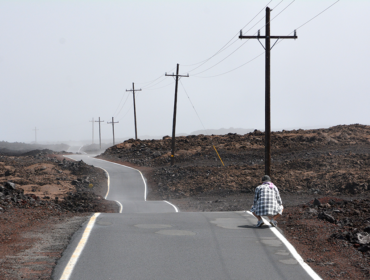Triathlon is a very young discipline. The period we overlook to assess the longterm consequences of a long and successful racing carreer is still very short. The performance of many of the top athletes around 35 and older began teetering recently, after they were successful for more than 10 years. They began training when they were 18 and younger. Over years they pushed their bodies to the extreme. Nobody considered or even knew anything about the aftermath. Now it seems longterm effects start showing in body and psyche.
It really touches me if I see how hard athletes like Thomas Hellriegel or Lothar Leder try to reach the top again. They simply don’t succeed and everybody seems to know that, only they themselves don’t. They don’t manage to make a break to recuperate mentally and with respect to their msucles. They loose self-esteem and everybody knows what it means to loose self-confidence. You cannot win without it.
I found a very interesting article in the British Journal of Sports Medicine raising the problem chronic muscle damage.
Most of these triathletes train 6 to 7 days a week. Training often begins 24-48 hours after a race. This despite the fact that repair processes after a marathon race for example take 1-10 weeks. Muscle damage occurs every day, even if it is only minor. Although the skeletal muscle has a remarkable capacity for repair and adaptation, research on exercise induced muscle damage, aging and overtraining suggest that this capacity is limited.
A group of scientists around Noakes, Cape Town, South Africa, suggests that over the years there is a cumulative effect of repeated bouts of muscle damaging endurance training and racing, and potentially incomplete repair on skeletal muscle function and morphology.
Case studies support an association between longterm high volume endurance training and racing and chronic skeletal muscle damage. Just for a sudden a decline in performance and an inability to tolerate high training loads occurs.
The tragedy of this story, I outlined here only very briefly, is that data indicate that this process may be irreversible. A long and successful career may have a sudden end without a chance of a comeback? Maybe, nobody knows for sure by now!
*Gobler LA, Collins M, Lambert MI, Sinclair-Smith C, Derman W, Gibson CStA, Noakes TD: Skeletal muscle pathology in endurance athletes with acquired training intolerance. British Journal of Sports Medicine, 38:697-703, 2004.
The clinical condition of these athletes was called »fatigued athlete myopathic syndrome«. The common characteristics among these athletes were a history of high volume endurance training and racing, a precipitous decline in running performance that was not related to ordinary aging, and an inability to tolerate and adapt to previously accustomed exercise training loads. Skeletal muscle symptoms were the ones prevailing including excessive delayed muscle soreness and muscle stiffness, tenderness, and weakness.
On investigation, structural and ultrastructural abnormalities of skeletal muscle degeneration and regeneration were noted.





Sounds very reasonable… as mentioned, it looks pretty much like some athletes who have been very successfull over years all of the sudden are not capable of doing any close to what they have achieved in their carreer before.
I personally have experienced, that especially high volume training is very tiring and causing much more side effects like bad colds, other infections, injuries etc. than a moderate approach, and that with much less than what the average triathlete thinks would be sufficient for a good performance, one can stay on the top for a decade or longer.
The muscle rebuild time is longer, the sooner (even very easy) training starts after long races. If training is kept as low as 20% of the usual volume with one week completely off immediately after the first race, I was able to do better at the second long course race scheduled 3-6 weeks after the first one. Cardiovascular fitness loss seems to be minimal, but muscular adaptation maximised this way.